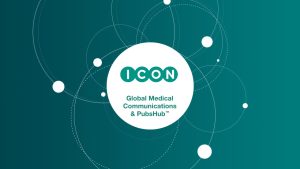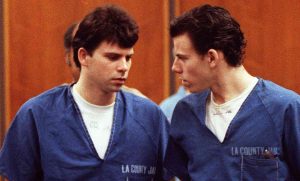Since 1992 Mr Munchi Choksey, MD (Cantab) FRCS (SN) has worked as a Consultant Neurosurgeon. Munchi has performed over 2,000 intracranial procedures, including clipping of over 400 cerebral aneurysms. Performing back surgery in Warwickshire he has operated on over 5,000 lumbar spines, including 350 spinal fusions; and over 1,000 cervical spines (necks). In particular, he carries out a large number of revision spinal procedures in patients who have had previous spinal surgery elsewhere. This often involves spinal fusion, which may need to be done from the back or front. Munchi carries out over 100 lumbar spinal procedures and approximately 30 cervical spinal procedures a year. Mr Choksey has a very wide experience of all aspects of clinical neurosurgery. In addition, he acted as an examiner for The Royal College of Surgeons in Surgical Neurology for ten years. He is a recognised expert witness, preparing reports for both the Plaintiff and the Defendant.
We speak with one of the UK’s most experienced neurosurgeons, Munchi Choksey, this month about how the medical sector is often under the litigation spotlight. Serving as an expert witness, Mr. Choksey will be revealing in the next two editions of Lawyer Monthly various conditions which are subject to medical negligence and where improvement can be made in order to avoid such lawsuits. This month we will focus on intracranial conditions; Munchi speaks on common problems that arise, and the faults in the NHS which add to the ever-present negligence lawsuits.
What are the common conditions regarding head injuries that you often see arise in your role as an expert witness?
There are about ten conditions I deal with fairly regularly, regarding neurosurgical negligence. I have discussed four here – head injury, subarachnoid haemorrhage, intracranial infection and venous sinus thrombosis. The themes they illustrate apply to most, if not all, neurosurgical emergencies.
If there is a common theme, it is that with all neurosurgical emergencies, by the time the diagnosis is glaringly obvious, it is often too late to do anything useful about it and the consequences for patients and their relatives may be devastating. Part of the art of clinical medicine is being able to spot the genuine emergency and then to know what action to take, and to take it quickly. Above all, to brook no delay from anyone who seeks to obstruct the way ahead.
Head injury
Head injury is quite common. Approximately a million people a year go to the accident and emergency (A&E) department in England and Wales with a head injury. Only a small proportion need to be kept in hospital. Around 30-40,000 will be detained, and about 15,000 will need transfer to the neurosurgical department. The reason why things go wrong with head injuries, is due to the fact the problem is not always initially evident.
I have always pointed out to the junior doctors I have trained that patients with a neurosurgical emergency will seldom walk in evidently displaying that they have a such a problem; it really is up to the doctors and nurses to realise that this is not one of the 50 other patients that have attended in the last week with a more common minor head injury. This patient has the potential of developing a very serious problem, usually an expanding haematoma in the cranial cavity. There are clues that you have to pick up. The most important clue is their behaviour: particularly changing conscious level. The patient begins behaving in an erratic fashion, becomes uncooperative and frequently abusive.
The most frequent, yet dangerous, assumption made is that the patient is under the influence of drugs and alcohol. When a patient is not sober, there are two further risks posed: he is more likely severely to injure himself, and being under the influence of such substances often leads to the patient not being treated quickly. Drunken patients sober up, so if their state is progressively getting worse and their behaviour is becoming more erratic, the problem is likely to be something else. Unfortunately, these patients are ignored and later found in a worsened state, frequently in a coma.
Response time is the next problem; nowadays there can be a delay for up to two hours to find a neurosurgical unit which can take the patient. More often than not, there may be a lack of beds. This results in consultants phoning back and forth trying to find a specialist, while all in the time the patient’s state is deteriorating. Preparing for surgery also takes time. Frequently, the anaesthetist can take up to an hour to ensure the patient is stable. All-in-all, from the time of injury, it can take up to six hours – or more - for definitive life-saving surgery to begin. Recommendations from the Royal Colleges of Surgeons suggest that the maximum interval should be four hours from injury to haematoma removal; unfortunately, this is rarely complied with.
The essential message about these patients with life-threatening traumatic intracranial haematomas is this:
- IDENTIFY the problem as soon as possible;
- SCAN the patient;
- TRANSFER the patient safely but QUICKLY;
- ADMINISTER treatment to reduce the intracranial pressure;
- Get the clot out!
These patients often seek litigation as their quality of life is significantly reduced; due to improper treatment, they often have lifelong disability, are unable to work and look after themselves. The costs of these cases are colossal. Care costs can amount to around £100-150,000 a year; multiply that by 40+ years of expected life, and you can see why these are very big cases.
What are other conditions involving the brain?
Brain Haemorrhages
The next diagnosis that I deal with quite frequently are haemorrhages: bleeding inside the head. Subarachnoid haemorrhage is a unique condition which can strike anybody at any time without warning. A common symptom is a sudden agonising headache and the most prevalent cause of this is a ruptured intracranial aneurysm. There is virtually no other condition in medicine that mimics this. The diagnosis lies almost entirely in the history. Frequently, the first bleed is small and its effects may wane over hours or days. When the patient arrives at A&E, they may feel fine and on examination, there may be nothing to find, so the patient is reassured and sent home. However, with a ruptured aneurysm, the patient is very likely to bleed again. Usually, the second bleed is worse: disabling or fatal. Frequently, the pain is attributed to migraine, or cervical spondylosis. The condition is more common in women, and the peak incidence is in the sixth decade: when patients frequently have co-morbidity.
As a neurosurgeon, you want to identify the patient when they are awake and talking. In this group, the cure rate is very good (around 95%). The re-bleeding rate is about 2% per day over the first two weeks; 40% in 6 weeks, and 67% over a year. So, miss the diagnosis, and the consequence is either death or disability in over half these patients within a year. This condition often comes to the attention of lawyers for two reasons: delayed diagnosis, and a consequent stroke, or a second (or third or fourth…) bleed. The consequence of missing the diagnosis may be a lifetime of severe and avoidable disability, or unnecessary death.
These are tragic cases, involving families suffering due to a treatable condition that was missed.
Infection
Infection inside the head – which is not very common these days – is another condition I deal with as an expert witness. Paranasal or mastoid sinus disease is a common factor causing such infection; it can lead to spread of infection into the cranial cavity, causing an abscess in the brain, a surface collection (a sub-dural empyaema), or venous sinus thrombosis. Curiously, meningitis from untreated sinus disease is uncommon. Surprisingly, teenagers are quite prone to this condition, which is often misdiagnosed because the symptoms are often dismissed. Feeling groggy, with a headache and a depressed mood, is not uncommon in teenagers. If not treated as an emergency, these patients become very sick. They may suffer widespread brain damage, with paralysis, fits or a stroke. Once again, when the treatment is delayed, the patient can be left disabled for years. A student who was hoping to go to university may lose the prospect of studying and then earning. These are high value cases, often settled for millions of pounds: a compound of the care costs, the loss of earnings, and the prolonged life expectancy.
Venous sinus thrombosis
Another condition is venous sinus thrombosis, which leads to raised intracranial pressure, and venous haemorrhage. If identified early, it responds well to anticoagulant therapy. However, once again the significance of the early symptoms may be underestimated. The patient suffers from headaches, blurred vision, nausea, and dizziness. In the early stages - when this condition is most readily treated – the symptoms may be dismissed. Women are more prone to this condition. It may be more common in those taking the oral contraceptive pill. As with so many other neurosurgical emergencies, by the time the diagnosis is glaringly obvious, it is often too late. The skill of medicine is to be able to spot these problems early on.
General comments
All these cases come up with depressing regularity: and they are still being missed. This is a shame, as we have good access to scanning and technology.
Take a subarachnoid haemorrhage: the argument often voiced is that not everyone suffering a sudden headache – for example - can be scanned, and then subjected to a lumbar puncture. This would cost about £500 per patient. The system cannot afford it, say the NHS providers. However, consider the counter-argument: a successful lawsuit for a missed subarachnoid haemorrhage can cost £5million. That means the clinician has to be right only once in every 10000 cases.
Quite often, litigation is not sought after for financial gain, but based on the breach of Duty of Candour; doctors seldom apologise or try to rectify the mistake at hand by referring the patient elsewhere. More often than not, they lie (or are economical with the truth) and hope the problem at hand will go away. Anger is also a really important aspect of the litigation. Honesty is vital in these situations. The NHS purports to have a culture of openness. In my 35 years in the NHS, from 1979 to 2015, I only rarely encountered anything even remotely approaching candour. Rather, the culture is one of obfuscation, and delay in responding to complaints. Frequently, the complaints are handled by people quite untutored in the subject. By contrast, The Courts expect that anyone who puts himself forward as an expert witness has the appropriate experience, knowledge and expertise: and will confine himself to that area, and not stray outside his own field.
.
Reports often blame a lack of funding; to what extent do you agree with this?
Most people blame lack of funding, but the problem is recruitment and retention of high quality of staff. Above all, the problem is a demoralised and de-motivated medical profession. Those who can afford to leave, do so as soon as their pension pot seems adequate. The new system of appraisal and revalidation has not caught any Shipmans – nor will it: psychopaths like them will be past masters at manipulating the system. There has been a proliferation of new “cottage industries”. It has spawned an ever-expanding bureaucracy, which is strangling the medical profession like a metastasizing illness. There has been no scientific randomised clinical trial evaluation of all this jargon-infested verbiage. It has been put in place to delude the public into believing that doctors’ performance is evaluated rigorously and forensically. It does nothing of the sort. Rather, there is a huge emphasis on evaluating behaviour, and little or none on clinical standards. As a neurosurgeon, the only outcome measures that matter to me are clinical. Has the advice I gave my patients been balanced, thorough and fair? How many of my patients have improved, or been cured? Has there been a significant number of post- operative complications, like infections, haemorrhages, CSF leaks, nerve damage, or avoidable deaths? This is real accountability: what the NHS measures is usually trivial.
Matters will only improve when the NHS faces true public evaluation of the CLINICAL outcomes achieved for its patients, and accepts its obligation to provide honest, objective data. That is its duty as a public service. Until that happens, the Courts will provide the only route to forensic scrutiny.
Since 1992 Mr Munchi Choksey, FRCS has worked as an independent Consultant Neurosurgeon. Munchi has performed over 2,000 intracranial procedures, including clipping of 400 aneurysms. Performing back surgery in Warwickshire he has operated on over 3,000 lumbar spines, including 350 spinal fusions and over 1,000 cervical spines (necks). In particular, he carries out a large number of revision spinal procedures in patients who have had previous spinal surgery elsewhere. This often involves spinal fusion, which may need to be done from the back or front. Munchi carries out over 200 lumbar spinal procedures and approximately 50 cervical spinal procedures a year. Mr Choksey has a very wide experience of all aspects of clinical neurosurgery. In addition, he acts as an examiner for The Royal College of Surgeons in Surgical Neurology and has done so for ten years. He is a recognised expert witness, preparing reports for both the Plaintiff and the Defendant.
Mr. Munchi Choksey MD (Cantab) FRCS(SN)
Neurosurgeon
Fillongley House,
Fillongley.
CV7 8EA
munchichoksey@outlook.com
01676 549 017
www.munchichoksey.co.uk




















